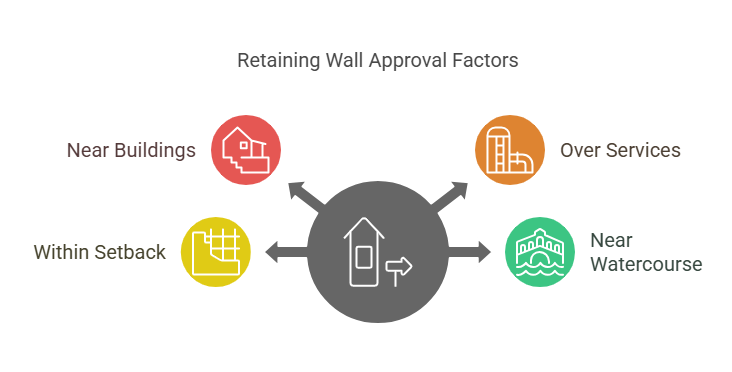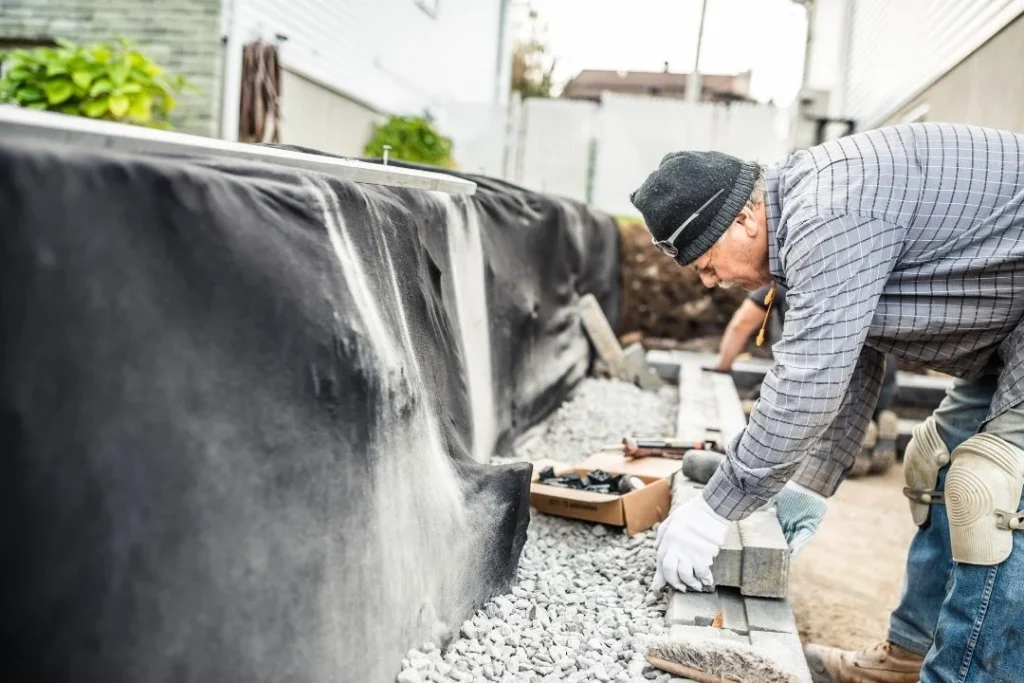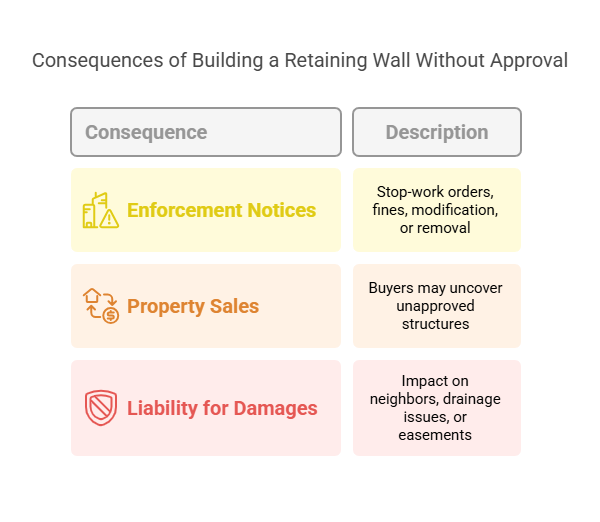Retaining walls are a familiar sight in many Gold Coast backyards, especially where sloping blocks, uneven ground, or landscaping upgrades come into play. Whether you’re levelling out an area for a patio, preventing soil erosion, or adding structure to your garden, a retaining wall can be practical and visually appealing.
But while retaining walls can transform a space, there are a few rules and approvals you might need to navigate before construction begins. Factors like height, location, materials, and whether the wall supports extra loads all play a part in whether council approval is required. This post will answer key questions to help you build a retaining wall without any unexpected surprises.
Do you need Council Approval to Build a Retaining Wall on the Gold Coast?

For most small-scale residential retaining wall projects, council approval is not required if it meets certain criteria as outlined by the Gold Coast City Council. Most notably, the retaining wall must be less than a height limit of 1 metre, be further than 1.5m from a building or another retaining wall, and not support additional loads like a driveway. For a full list of criteria, check out the Gold Coast City Council’s retaining wall guidelines.
What’s the Maximum Height for a Retaining Wall on the Gold Coast Without Council Approval?
You generally don’t need council approval for a retaining wall if it’s less than 1m tall, as long as it meets other requirements like being structurally sound and located appropriately on your property.
Can I Build Tiered Retaining Walls to Avoid Approval?
Building tiered or terraced retaining walls is a common way to manage changes in elevation without exceeding height limits, but you should consider the spacing between each tier. For walls to be considered separate structures and avoid requiring approval, they need to be spaced at least 1.5 metres apart horizontally. If tiers are built close together, the council may assess them as one combined structure, which would need approval requirements even if each wall is under the height limit.
That said, spacing alone doesn’t guarantee exemption, as there are other factors like soil considerations, drainage impacts, and proximity to boundaries that could still require approval or engineering oversight.
Does the Wall’s Location on My Property Affect Whether I Need Approval?

Yes, the location of your retaining wall can be just as important as its height when it comes to council approval. Even if your wall is under 1 metre high, approval may still be required depending on where it’s positioned on your property. Some of the key triggers include:
- Within 1.5 metres of a building or another retaining wall
- Over or near underground services like sewer lines or stormwater drains
- Within a setback area, like close to a road frontage or public infrastructure
- Near a natural watercourse or registered easement
These rules help protect infrastructure, ensure proper drainage, and avoid disputes with neighbours.
How Do I Know If Engineering Is Required?

From our experience, the most common cases of retaining walls requiring engineering certification are typically one or more of the following:
- exceed 1 metre in height
- situated within 1.5 metres of a building or another retaining wall
- subject to surcharge loading, such as supporting driveways
Are There Different Rules for Different Retaining Wall Materials?
While height, location, and load-bearing capacity are the main factors that determine approval requirements, the type of retaining wall you build can also play a role. Timber sleeper walls are lighter and more flexible, but because they can degrade over time due to the humid climate, stricter structural standards may apply if the wall is holding back significant loads. Even when a wall falls under the height limit, material lifespan and stability are taken into account when assessing safety.
What Happens If I Build a Retaining Wall Without Council Approval?

Building a retaining wall without council approval when it is required can lead to serious consequences. The Gold Coast City Council has the authority to issue enforcement notices, which could include stop-work orders, fines, or even requiring you to modify or remove the wall entirely. Beyond penalties, unapproved structures can cause headaches down the line, especially if you plan to sell your property. Buyers might uncover that the wall doesn’t have the necessary approvals during legal checks. If the wall impacts neighbouring properties, causes drainage issues, or is built over easements, you could also be held liable for damages. Understanding the true cost of a retaining wall, including potential compliance issues, can help you plan properly and avoid these setbacks from the start.
Who Do I Contact for Retaining Wall Approvals on the Gold Coast?
The best place to start is with the Gold Coast City Council’s Planning and Development team. They can guide you on whether your retaining wall is considered self-assessable or if it requires a development or building application. The council also provides helpful resources, including online guidelines and application forms, to make the process easier. If you’re looking for faster approvals or more tailored advice, you can also engage a private certifier. Certifiers assess your plans, ensure they meet the necessary standards, and can often help streamline the approval process.
Can a Licensed Builder or Landscaper Handle the Approval Process for Me?

Many licensed builders and structural landscapers on the Gold Coast offer design-and-build services that include managing the approval process for retaining walls. This takes the stress out of navigating council requirements, as they often work directly with private certifiers and the council to ensure everything is compliant from the start.
Build It Right the First Time: Stay Compliant and Stress-Free
Retaining walls can do wonders for your outdoor space. Whether it’s levelling out a tricky slope, creating usable garden areas, or simply adding structure to your landscaping. But making sure your wall is safe and compliant is just as important as how it looks. Taking the time to check approval requirements and working with licensed professionals can save you from costly mistakes and legal headaches later on.
When it comes to retaining walls, there’s no room for shortcuts. From ensuring structural integrity to navigating council approvals, every step matters. Our team brings the experience and local knowledge to handle it all, so you can stop worrying while we take care of the process. Get in touch today and let’s create a retaining wall designed to suit your home and stand strong through every season.




